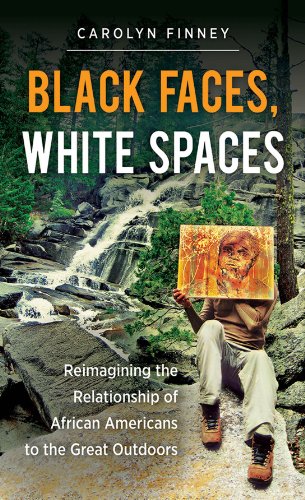
Black Faces, White Spaces: Reimagining the Relationship of African Americans to the Great Outdoors
Description
From the Inside Flap Why are African Americans so underrepresented when it comes to interest in nature, outdoor recreation, and environmentalism? In this thought-provoking study, Carolyn Finney looks beyond the discourse of the environmental justice movement to examine how the natural environment has been understood, commodified, and represented by both white and black Americans. Bridging the fields of environmental history, cultural studies, critical race studies, and geography, Finney argues that the legacies of slavery, Jim Crow, and racial violence have shaped cultural understandings of the "great outdoors" and determined who should and can have access to natural spaces. --This text refers to an out of print or unavailable edition of this title. Carolyn Finney is assistant professor of geography at the University of Kentucky. --This text refers to an out of print or unavailable edition of this title. Using collective memory, race, and environment, Finney looks at the effect of slavery and Jim Crow segregation and their key roles in shaping African American connections to place--the 'great outdoors' or the 'environment' more generally. She looks at representation of African Americans in the great outdoors as being a key site of contestation, of struggle. She also looks at the difficulties inherent in discussions of race and diversity within environmentalism, and with environmentalists. Finney shines a different light, and brings a different voice to bear.--Julian Agyeman, Tufts University --This text refers to an out of print or unavailable edition of this title. Makes a clear case for the dominant culture's habitual (though, sometimes unwitting) rejection of African Americans.-- Library Journal Starred ReviewA must-read for those who hope to make the parks matter to diverse populations.-- Sierra Weaving scholarly analysis with interviews of leading black environmentalists and ordinary Americans, Finney traces the environmental legacy of slavery and Jim Crow segregation, which mapped the wilderness as a terrain of extreme terror and struggle for generations of blacks—as well as a place of refuge.-- The Boston Globe Finney's exemplary work moves beyond a critique of the movement and popular culture. It carves through multiple layers of meaning to excavate unique moments of African American environmental history that demand retelling.-- Choice Offers an engaging interdisciplinary analysis of the historical conditions that shape the whiteness of 'Nature' in the United States.-- American Book Review --This text refers to an out of print or unavailable edition of this title. Read more
Features & Highlights
- Why are African Americans so underrepresented when it comes to interest in nature, outdoor recreation, and environmentalism? In this thought-provoking study, Carolyn Finney looks beyond the discourse of the environmental justice movement to examine how the natural environment has been understood, commodified, and represented by both white and black Americans. Bridging the fields of environmental history, cultural studies, critical race studies, and geography, Finney argues that the legacies of slavery, Jim Crow, and racial violence have shaped cultural understandings of the "great outdoors" and determined who should and can have access to natural spaces. Drawing on a variety of sources from film, literature, and popular culture, and analyzing different historical moments, including the establishment of the Wilderness Act in 1964 and the aftermath of Hurricane Katrina, Finney reveals the perceived and real ways in which nature and the environment are racialized in America. Looking toward the future, she also highlights the work of African Americans who are opening doors to greater participation in environmental and conservation concerns.





